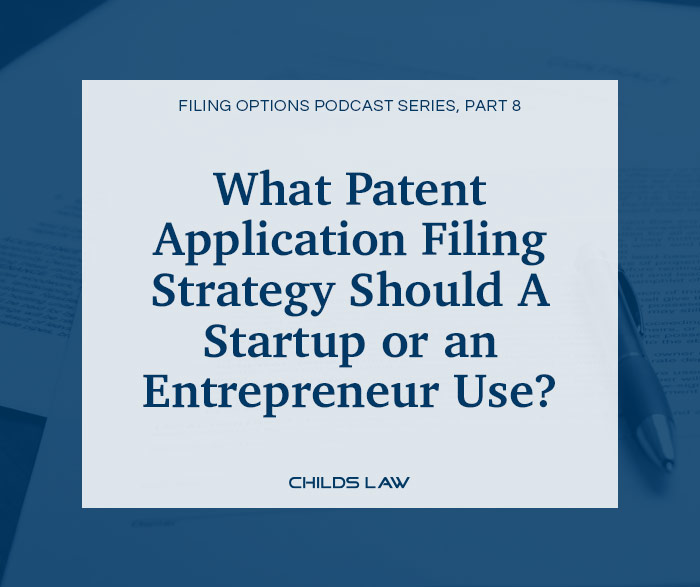
The answer to this question depends on several factors, including if you need outside investment, if you want to protect your invention in just the U.S. or multiple countries, and if your business is ready to start selling.
Most startups and entrepreneurs are bound by the same limitations. They need outside investment, they want to protect their invention in multiple countries, and their invention is not ready for commercialization yet due to a lack of resources (money) or needs more development (design).
These similar limitations lead to a common filing strategy that I refer to as the “long game.” The inventor starts by filing a U.S. Provisional Application. This step helps the inventor secure their priority date and protects their invention for up to one year while they refine their invention and talk with inventors, experts, manufacturers, and the like under NDAs.
At the end of the year, the inventor then files a PCT Application. The PCT Application acts like an international placeholder that allows the innovator to continue raising investments for another 18 months while putting off the costs of international patent applications as long as possible. The PCT Application is also examined and published, which gives the inventor a public document to show potential investors.
At the end of 18 months, the inventor selects which countries they want to file a patent application in. The act of filing patent applications in multiple countries creates an international patent portfolio from a single PCT Application. Each of these patent applications will take various amounts of time to be examined by the patent office of each country. For example, the United States Patent and Trademark Office (USPTO) will examine a US National Stage Application (U.S. Non-Provisional Patent Application) for patentability in an average of 16-18 months from the date of filing and usually reaches a final disposition (allowed or abandoned) in about 4 years from the date of filing.
In summary, here is the timeline for patent protection when playing the “long game”:
The first year is protect by a U.S. Provisional Patent Application, the next 18 months are protected by the PCT Application, and the next 18 to 48 months or more are protected by the patent application filed in each country, for a total patent protection strategy of 3-6 years or more.
The major benefits of this filing strategy are that it:
- Allows for invention improvements for up to 1 year.
- Preserves your patent rights in almost all countries.
- Puts off most costs and decisions for a long as possible.
The drawback of this strategy is that it takes at least 3 years to obtain a US Patent, so you cannot sue a potential infringer in the US for at least 3 years.
This strategy is a favorite for pharmaceutical, medical device, life sciences, microelectronic, mechanical, materials, and oil and gas businesses. It is also a favorite for most startups and entrepreneurs.
Looking for the right patent strategy for your business?
Call Childs Patent Law at 832-621-0353 and let’s talk about what your business needs.